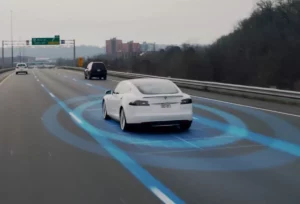A study into the effects of driverless freight technology in America has concluded that there will not be a need for drivers to lose their jobs to automation.
The Federal Department of Transport report, “Macroeconomic Impacts of Automated Driving Systems in Long-Haul Trucking” that assuming the occupational turnover remains near today’s levels, employment levels in the long-haul trucking sector will necessarily fall due to automation, but will not force lay-offs in the slow and medium speed adoption scenarios.
Its analysis says the economic benefits produce welfare increases ranging from $35 per person in the U.S. per year under the slow adoption scenario to $69 per person per year under the fast adoption scenario, raise annual earnings for all U.S. workers by up to $267 per worker per year and increase total U.S. employment by 26,400 to 35,100 jobs per year on average. That’s despite decreases in employment for long-haul truck drivers.
Researchers say the lower employment levels for long-haul truck drivers can largely be offset with natural occupational turnover. Only in what they call a “fast adoption scenario” will there be layoffs, of around 11,000, or just 1.7% of the long-haul driver workforce.
The report used the modelling capabilities of the USAGE-Hwy model of the U.S. economy, which simulates the macroeconomic impacts of automated driving systems. The fast scenario is “intentionally a very optimistic scenario” in which 75% of new vehicle purchases involve ADS in 10 years of the technology becoming available. The medium and slow scenarios assume 48% and 19% of firms having begun adopting 10 years after the technology becomes available, respectively.
The study says this research is the first that estimates not only the direct improvements to productivity in the trucking industry from ADS, but also the indirect impacts to other industries resulting from the central role transportation plays in the larger economy.
(Picture – From US Department of Transportation Report)






















